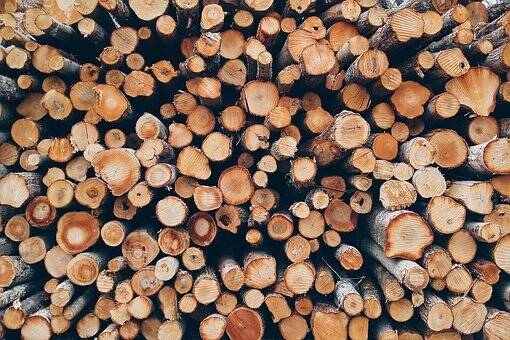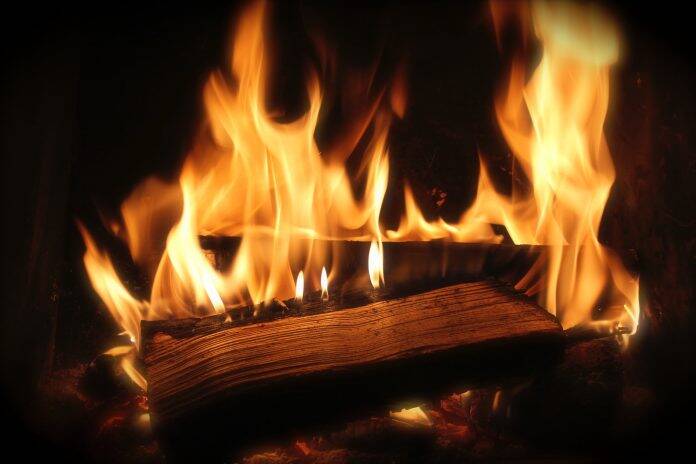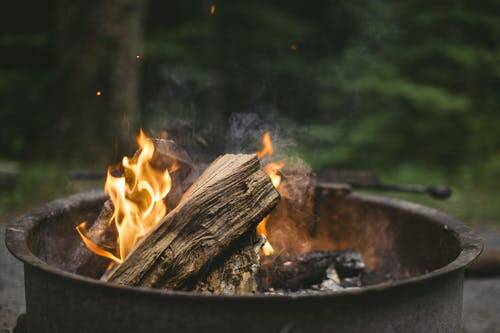Ever since the discovery of fire, humans have been trying to control it and make the best use out of it. A few of these uses include creating glass and firing pottery vases and plinths, which led to the making of the first kiln in the year 8000 BC. Since then, kilns have evolved to reach higher temperatures and stabilize fire more effectively. A kiln’s importance in the world of pottery still remains notable to this day. Even with the development of new technologies every day, kilns haven’t been replaced. Instead, technology aided in the transformation of a kiln into an even more powerful and sophisticated instrument.
For millennia, clay has been made into bricks, tiles, and pottery through the use of kilns. If the clay isn’t fired, it will ultimately break and shatter. There are many types of kilns out there, and each is suitable for various purposes. That said, there are many things to keep in mind when it comes to purchasing and owning a kiln. This is why you should read through this article to find out everything you need to know about kilns and why you should get one.
Why you Should Get a Kiln
Kilns are the essence of pottery, and no piece would be complete without them. The first kilns were just holes in the grounds with bonfires on top. Today, kilns have become more revolutionary and intricate masterpieces themselves. Kilns greatly vary in sizes ranging from the size of a stove to the size of a whole room. A kiln is more than just an oven that helps fire your unfinished clay pots to turn them into artwork. The firing process is a craft on its own, and to get satisfactory results, you must be open to experimentation. The way a piece is fired has a great impact on the final result.
Other Uses for Your Kiln
u are not quite the potter, kilns can be used for many things far beyond the scope of pottery. This will allow you to discover your abilities and work on different skills.
Artwork Effects
Kilns can be used to give an aged, charred effect to your artwork. Kilns are known to use heat to conduct many chemical changes, including dehydration. This makes a kiln perfect for drying out fluid-based elements from your artwork, making it look antiquated. You can do this to get your paper look charred or to make your wooden artwork look aged. However, you must be careful because both processes require using extremely high temperatures. So before you start, it is recommended that you experiment and control different heat settings so that you don’t risk ruining your artwork.
Sterilization
A kiln can also be used as an instrument to sterilize your tools or materials. As long as a kiln’s dehydrating property does not damage your objects, a kiln would be great for sterilization. Because of high temperatures, kilns can sterilize a variety of kitchen supplies, utensils, metal instruments, and wooden structures. Kilns coated in a ceramic kit can also be suitable for sterilizing items that cannot be sterilized elsewhere.
Drying Wood for Furniture-Making
Kiln-dried wood makes the best furniture because the kilning process removes most of the moisture from the wood. For that reason, the folks at Buy Firewood Direct recommend that you use kiln-dried wood when making furniture. This is because when there is less moisture in wood, the furniture becomes sturdier and ends up looking even better. Small cracks, warping, and other similar issues are less likely to happen to kiln-dried wood.
Metal-Work
You can use your kiln to make knives! To make a knife, you need dangerously high temperatures for molding and solidifying the metal. You can use a kiln to make any other metallic structures of your choice. It is the perfect instrument for this task as it has the proper and the required heat temperature coatings and settings that are needed to reflect the heat and concentrate it on the metallic object.
Ceramics
Although you may think that they are close to pottery, ceramics differ in a lot of aspects and can be made with the help of kilns. To make ceramics, you need to use a different technique as their structure differs from that of pottery. They are also far more delicate and take a different form of shaping. Kilns that are covered in a ceramic coating kit would make an awesome, naturally-suited instrument for the making of ceramics.
Different Kiln Structures

There are mainly two types of kiln structures, tunnel or continuous kilns, and intermittent or periodic kilns. The tunnel or continuous ones are mainly used for industrial manufacturing as they continuously fire and never cool down. To fire an item, it must be placed in a car that slowly moves through the kiln. Intermittent kilns, on the other hand, are mainly used by potters as they are less intense and fire periodically. When the items are placed into the kiln, the temperature is set, and when done, the kiln proceeds to cool down.
Updraft Kilns
In an updraft kiln, the fire is at the bottom of it or below the floor level. It consists of three parts, a stack area, a firebox, and a damper. A firebox is at the bottom where the flame enters, while a damper is located at the top. The damper’s function is to maintain the exhaust and regulate the kiln’s atmosphere. The stack area, which is located between the firebox and the damper, is used to stack the pots. Updraft kilns are easy to build, package, and transport, which is why they make the majority of commercially built kilns. However, they are not as fuel-efficient as downdraft kilns.
Downdraft Kilns
In downdraft kilns, the flame is introduced at the bottom and flows upwards, then it is forced back down and is exhausted at the bottom due to the way the kiln is constructed. This forces hot air to circulate through the kiln. A downdraft kiln is made up of four main parts: a chimney (which creates a draw and airflow), a stack area, a firebox, and a damper. Downdraft and sprung arch kilns are among the most popular kiln structures.
Sprung Arch Kilns
Sprung arch kilns have arched roofs that are built using a form. This form is removed when the construction of the kiln is completed; the arch stays in place and doesn’t require further internal support. To decrease the movement of the bricks that are used to build the kiln, and support the arch, kilns are framed with angle iron. This is because a kiln’s weight is displaced outwards due to the tension.
Catenary Arch Kilns
Catenary arch kilns are made of self-supporting arches and look the same as a parabola that is facing downwards. These kilns can either be updraft or downdraft, and their construction also requires a kind of support similar to sprung arch kilns. However, the structure of a catenary arch kiln makes it less efficient when it comes to the stack section.
Bottle Kilns
Bottle kilns look somewhat similar to the archaic beehive kilns. Beehive kilns don’t have flues, while bottle kilns have short chimneys. Bottle kilns can be shaped like bottles, domes, or take a circular form. They are usually constructed out of a wall and are updraft kilns. During the Industrial Age, they were used and fired by coals before they became replaced by continuous kilns.
Types of Kilns
There are three common types of kilns: electric, gas, and wood kilns.
Electric Kilns
Electric kilns are the most popular in the field of ceramics. They can also suffice for small pottery projects as they are relatively cheap, and the smaller ones can be directly plugged into a 120-Volt wall socket. These kilns fire in the presence of oxygen in controlled environments, which makes it easier for potters to replicate their work and yield consistent glaze results.
Gas Kilns
Gas kilns are fired by natural gas and without the presence of oxygen. This makes the firing process very unpredictable, however, it results in rich, earthy colors. It is hard to achieve consistency with these types of kilns, so if a potter is looking to replicate their work, it might not work. Gas kilns are perfect for the production of unique pieces.
Wood Kilns
Wood kilns are fired and fueled by wood and are a lot of hard work. This is because they need to be constantly stocked and re-fueled to maintain a high temperature. The wood firing process takes three times as long as other kilns. Though, when the wood ash falls and the pieces that are being fired, they create a unique, priceless glaze. This is why many potters still choose it over other kilns and believe that the results are worth all the hard work that goes into it.
Other Types of Kilns
Other types of kilns can be used to achieve specific results. For instance, salt or soda kilns are used to produce the bumpy surface that can usually be found on stoneware pieces. This surface is achieved when salt is introduced during the last firing stages, allowing the salt to react with the heat, resulting in a residue glaze.
Raku kilns are used to produce a metallic effect on pottery. Raku pottery is pulled with tongs out of the kiln after it is heated until it starts glowing. After the pottery cools down, it is immersed in cold water, resulting in a crackle effect. The carbon in the burning fuel turns unglazed areas of the pottery black. When the carbon is peeled off, the metallic result of the raku pottery appears.
Purchasing a Kiln
Now that you are an expert on kilns, it’s time to make a purchase. However, there are a few things to consider before buying a kiln to ensure that you make the correct choice
Understand Your Needs
It’s important to consider several aspects of the work that you intend to create before purchasing a kiln. Think about the size of the pieces that you will be making and whether they require certain dimensions or space. You should also know the amount of work that you intend to create at a time and the temperature range that you need to be able to fire them. Consider the type of glazes that you want to achieve and whether you need a kiln that enables the presence of oxygen.
Heat Source
You need to take your electrical needs into account and compare them to your current electrical capacity if you plan on purchasing an electric kiln. If you are considering a gas kiln, make sure that you have a natural gas line at your location, and that its pressure is adequate. For wood kilns, you need to be prepared for the hard work and patience that this type of kiln requires.
Space and Location
You should have enough space to accommodate the kiln that you are planning to buy. Make sure that you have at least one and a half feet of air space around the sides of the kiln. Check if you need clearance space under the floor for your ready-made kiln and that your floor is thick enough to stop any heat leakage if you are getting a built-in kiln. If your kiln will be located indoors, four feet or more of space overhead, even if there is overhead ventilation.
Kilns are very intricate tools, and there is too much to learn about them. They can be used for a variety of purposes, come in many sizes and structures, and have many types. Kilns are the heart and soul of pottery and without them, potters wouldn’t be able to achieve satisfactory results. Each type of kiln results in a different finish and effect, producing unique pieces. They also come with different requirements and suit different needs. To help you make the right choice, refer back to this comprehensive guide to learn everything there is to know about them.





